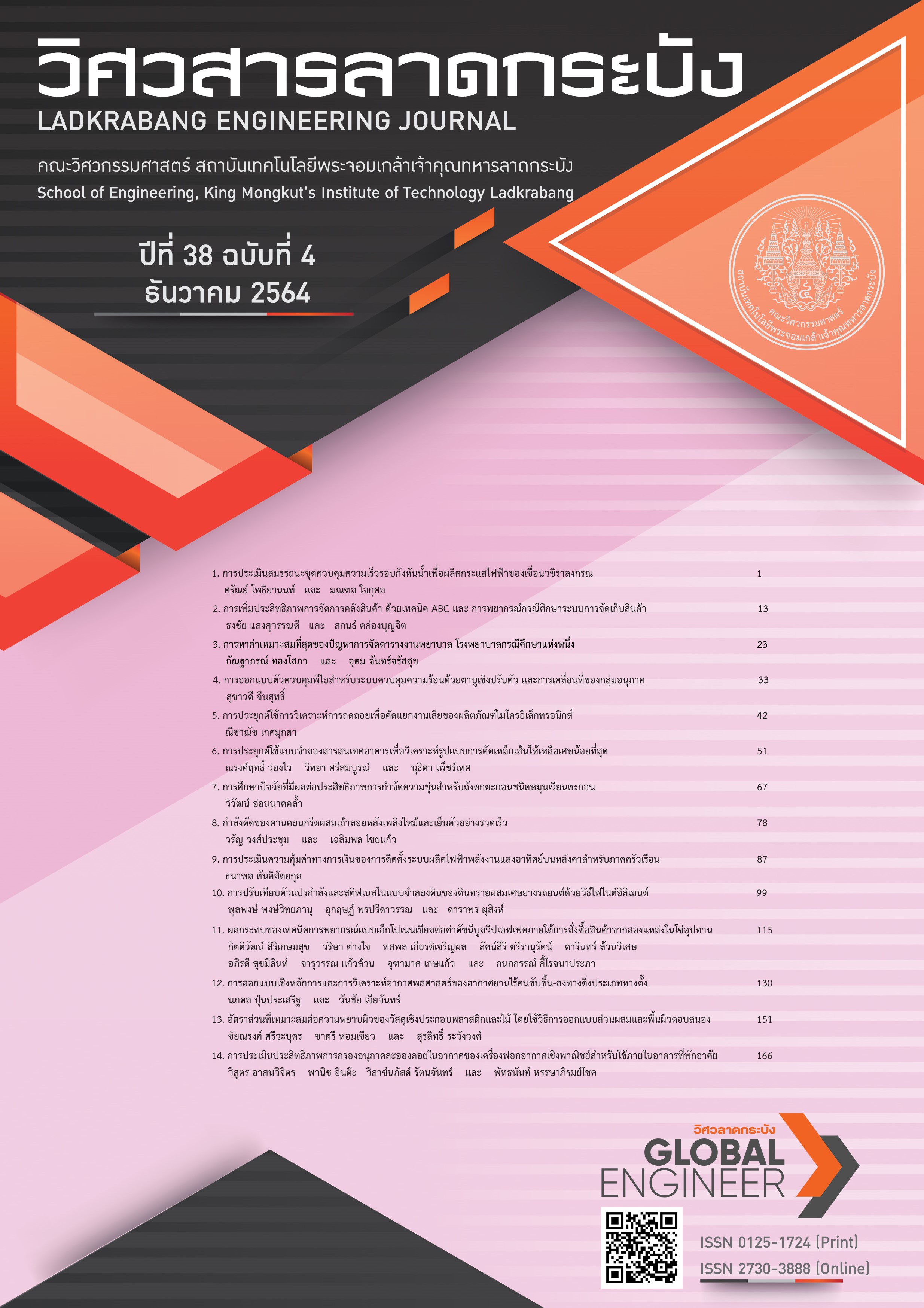Post-Fire Flexural Strength of The Fly Ash Concrete Beams and Rapid Cooling Down
Keywords:
Flexural strength performance, Flexural strength of the fly ash concrete, Post-Fire flexural strength of the fly ash concrete beamsAbstract
The purpose of this research is to test the post-fire flexural strength of the fly ash concrete beams and its rapid cooling down, as well as the effect of its exposure to heat. The test samples are three sets of 10×10×35 cm fly ash concrete beams which are 1) fly ash concrete beams, 2) fire-burnt of the fly ash concrete beams which cooled down rapidly (by soaking in the water), and 3) fire-burnt of the fly ash concrete beams which cooled down (in the air). For the experimental process, the fly ash concrete beams will be fire-burnt at the temperature of 400 degrees Celsius for 15, 30, and 45 minutes respectively. After that, the items will be brought to the standard flexural strength test of C78/C78M. The test results reveal that the flexural strength rate will decrease if the sample is being exposed to heat for a longer period of time, and the sample which is cooling down rapidly by soaking in the water will lose its flexural strength rate less than the sample which is left to be cooled down in the air. The reason was, leaving the items to cool down in the air, the item will have a rather high accumulated heat, resulting in a water evaporation in the fly ash concrete beams to occur continuously, leading to the subsiding of its flexural strength rate. The early age fly ash concrete is strength less valuable than concrete without fly ash, but at the long term it is strength higher than concrete without fly ash. However, if at high temperatures residual strength of due primarily to the reduced porosity.
References
W. Botte and R. Caspeele, “Post-Cooling Properties of Concrete Exposed to Fire,” Fire Safety Journal, vol. 92 , no. 3, pp. 142–150, Sep., 2017, doi: 10.1016/j.firesaf.2017.06.010.
C. S. Poon, S. Azhar, M. Anson and Y. L. Wong. “Strength and Durability Recovery of Fire-Damaged Concrete After Post-Fire-Curing,” Cement and Concrete Research, vol. 31, no. 9, pp.1307–1318, Sep., 2001, doi:10.1016/S0008-8846(01)00582-8.
O. Arioz, “Effects of Elevated Temperatures on Properties of Concrete,” Fire Safety Journal, vol. 42, no. 8, pp. 516–522, Nov., 2007, doi: 10.1016/j.firesaf.2007.01.003.
Q. Li, X. Huang, Z.Huang and G. Yuan, “Bond Characteristics Between Early Aged Fly Ash Concrete and Reinforcing Steel Bar After Fire,” Construction and Building Materials, vol. 147, no. 8, pp. 701–712, Aug., 2017, doi: 10.1016/j.conbuildmat.2017.04.184.
P. Nuaklong, P. Jongvivatsakul, T. Pothisiri, V. Sata and P. Chindaprasirt, “Influence of Rice Husk Ash on Mechanical Properties and Fire Resistance of Recycled Aggregate High-Calcium Fly Ash Geopolymer Concrete,” Journal of Cleaner Production, vol. 252, Apr., 2020, doi: 10.1016/j.jclepro.2019.119797.
B.Zegardło, M.Szeląg and P. Ogrodnik, “Concrete Resistant to Spalling Made with Recycled Aggregate From Sanitary Ceramic Wastes – The Effect of Moisture and Porosity on Destructive Processes Occurring in Fire Conditions,” Construction and Building Materials, vol. 173, pp. 58–68, Jun., 2018, doi:10.1016/j.conbuildmat.2018.04.030.
F. Tariqa and P. Bhargava, “Flexural Behaviour of Corroded RC Beams Exposed to Fire,” Structures, vol. 33, pp. 1366–1375, Oct., 2021, doi: 10.1016/j.istruc.2021.05.025.
Standard Specification for Coal Fly Ash and Raw or Calcined Natural Pozzolan for Use in Concrete, ASTM C618-19
G.J. Langdon-Thomas, “Fire and Buildings,” in Fire Safety In Buildings, 1st ed. London, United Kingdom : A & C Black, 1972, ch. 5, pp. 58–86.
Standard Test Method for Flexural Strength of Concrete (Using Simple Beam with Third-Point Loading), ASTM C78 / C78M – 21
M. Ozawa S. Uchida T. Kamada and H. Morimoto, “Study of Mechanisms of Explosive Spalling in High-Strength Concrete at High Temperatures Using Acoustic Emission,” Construction and Building Materials, vol. 37, no. 8, pp.621–628, Dec, 2012, doi: 10.1016/j.conbuildmat.2012.06.070.
V.Sairam, Pallapu B. J. N.Satish, K. Hemanth and K. Reddy, “Mechanical and Micro Structural Properties of Concrete Subjected to Elevated Temperature,” Materials Today: Proceedings, vol.33, no.1, pp.626–631, 2020, doi: 10.1016/j.matpr.2020.05.606.
T. Srichan, B.Chatveera, P. Choktaweekarn and S. Tangtermsirikul, “A Study on Curing Sensitivity of
Concrete with Different Cement Types and Mineral Admixtures,” KMUTT Research and Development Journal, vol.34, no.4, pp. 383–394, 2011.
A. Lau and M. Anson, “Effect of High Temperatures on High Performance Steel Fibre Reinforced Concrete,” Cement and Concrete Research, vol.36, no.9, pp. 1698–1707, Sep., 2006, doi: 10.1016/j.cemconres.2006.03.024.
M. Malik, S. K. Bhattacharyya and S. V. Barai, “Microstructural Changes in Concrete: Postfire Scenario,” Journal of American Society of Civil Engineers, vol.33, no.2, pp. 1–13, Feb., 2021, doi: 10.1061/(ASCE)MT.1943-5533.0003449.
Downloads
Published
How to Cite
Issue
Section
License
Copyright (c) 2021 Faculty of Engineering, King Mongkut’s Institute of Technology Ladkrabang

This work is licensed under a Creative Commons Attribution-NonCommercial-NoDerivatives 4.0 International License.
The published articles are copyrighted by the School of Engineering, King Mongkut's Institute of Technology Ladkrabang.
The statements contained in each article in this academic journal are the personal opinions of each author and are not related to King Mongkut's Institute of Technology Ladkrabang and other faculty members in the institute.
Responsibility for all elements of each article belongs to each author; If there are any mistakes, each author is solely responsible for his own articles.






